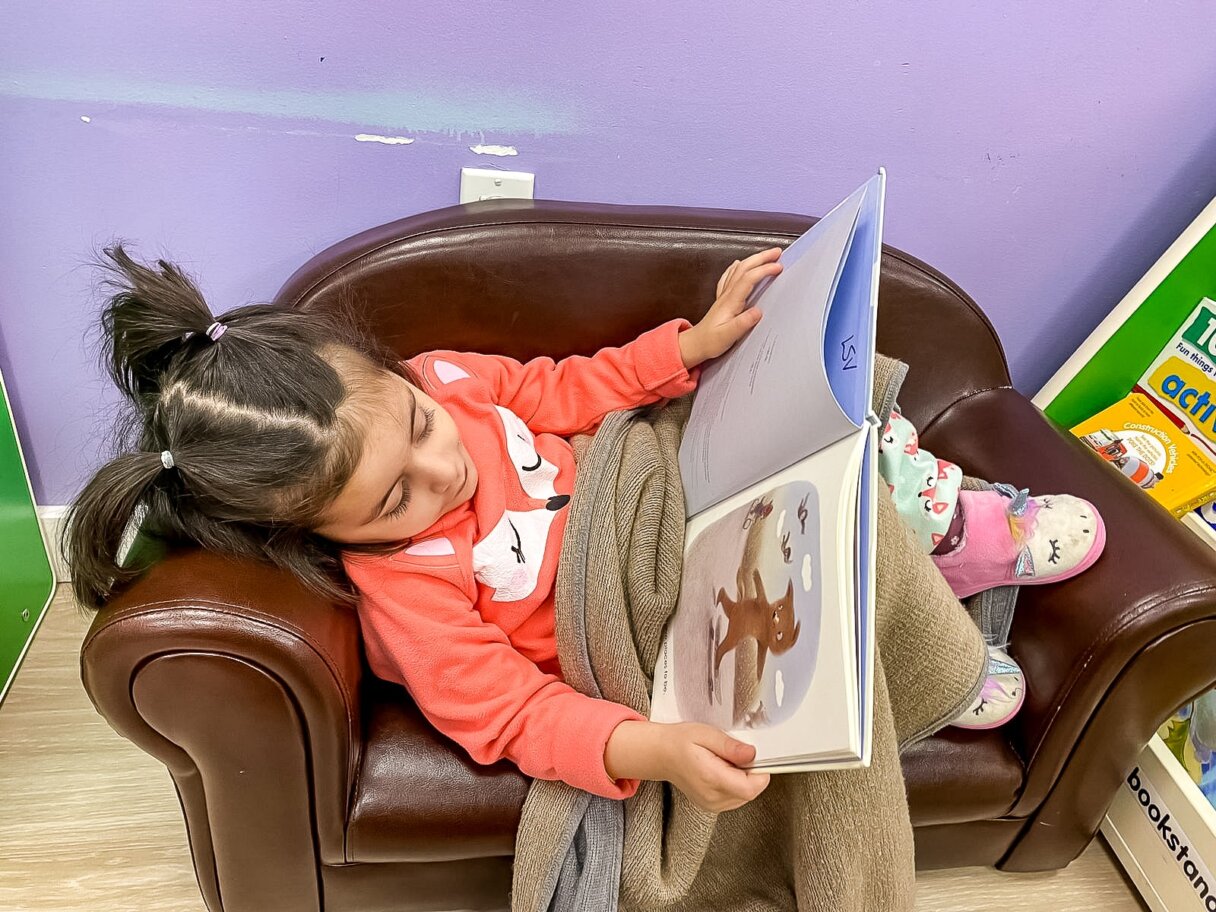
As the days lengthen and the first signs of spring emerge, families across the nation prepare for a significant yearly event: daylight savings time (DST). This ritual, where clocks are set forward by one hour, heralds longer afternoons and the promise of summer. However, for parents and caregivers, this time change can be a challenge, particularly when it comes to adjusting children’s sleep schedules and routines.
The transition to daylight savings time can affect children’s mood, behavior, and overall well-being. Therefore, it’s crucial for parents and caregivers to understand the importance of preparing kids for this shift. By gently adjusting sleep schedules, maintaining consistent routines, and employing strategies to ease the transition, we can help children adapt more comfortably to the time change. Discover expert strategies to ease your child into daylight savings time seamlessly!
What is daylight savings time?
Daylight Savings Time (DST) is a practice of setting the clock forward by one hour during the warmer months to extend evening daylight and shorten morning daylight. This means that the clocks are set forward by one hour in the spring and set back again in the fall. The idea is to use natural daylight better during the evenings, reducing the need for artificial lighting and saving energy.
Why do we have daylight savings time?
The concept of daylight savings was first proposed to take advantage of longer daylight hours during the summer months, thereby saving energy on artificial lighting. It was widely adopted during the 20th century to conserve fuel during the world wars. Today, the rationale extends to making better use of daylight, reducing electricity consumption, and providing more daylight hours for outdoor activities in the evening.
When does the time change occur?
In most areas where daylight savings time is observed, the change occurs twice a year. The clock springs forward, losing one hour, on the second Sunday in March, marking the start of DST. It falls back, gaining an hour, on the first Sunday in November, signaling the end of DST. This schedule shifts the amount of daylight experienced in the evening hours, affecting daily routines and activities.
Impact of Daylight Savings on Kids
Daylight Savings Time (DST) can significantly impact children, affecting their sleep patterns, behavior, and overall well-being. Here’s how the time change can influence kids:
- Disrupted Sleep Patterns
Children’s internal clocks, or circadian rhythms, can be sensitive to changes in light and time. When the clocks move forward in the spring, children might struggle to fall asleep at their usual bedtime, leading to less sleep overall. This shift can result in difficulty waking up in the morning and potential sleepiness during the day.
- Behavioral Changes
Lack of sleep and changes in routine can lead to mood swings, irritability, and increased fussiness in children. Some kids may exhibit behavior that is more challenging than usual, such as tantrums or resistance to bedtime routines.
- Cognitive and Academic Effects
Sleep is crucial for cognitive development and functioning. Even small changes in sleep patterns can affect a child’s attention span, memory, and learning abilities. The adjustment period following the spring transition to DST can sometimes coincide with decreased academic performance.
- Appetite and Metabolism
Disruptions to sleep can also impact eating patterns and metabolic rates. Children may experience changes in appetite, with increased hunger or lack of interest in food, which can affect their energy levels and nutritional intake.
- Adjustment Period
The degree of impact and the time it takes for children to adjust to the new schedule can vary. Some children adapt within a few days, while others may take a week or longer to settle into the new routine. Consistent bedtime habits and a supportive home environment can help mitigate these effects and aid in a smoother transition.
Effects on Sleep Schedule and Routines
The transition into daylight savings time can lead to significant adjustments in a child’s daily schedule and routines, beyond just sleep patterns:
- Evening Activities Shift
With more daylight in the evenings, children might have extended playtime and activities, which can delay the start of bedtime routines. This shift can make it challenging to wind down and settle into sleep at the usual time.
- Morning Routine Adjustments
The change to daylight savings time can make mornings feel more rushed. Children may have difficulty waking up due to the hour shift, impacting the usual morning preparations for school or daycare.
- Nap Time Discrepancies
For younger children, the time change can disrupt nap schedules. They might resist napping at the usual times or become sleepier earlier or later than normal, affecting their mood and energy levels throughout the day.
- Outdoor and Physical Activity Timing
The extended daylight hours can alter the timing and duration of outdoor and physical activities. While this can have the positive effect of increasing physical exercise and outdoor play, it might also necessitate adjustments in timing for dinner, bath, and bed to accommodate the longer days.
- Homework and Study Routines
For school-aged children, the extra hour of daylight can affect the timing and environment for homework and study. Parents might need to adjust schedules to ensure that children complete their academic responsibilities while also balancing the opportunity for increased outdoor activities.
Common Challenges Faced by Children During the Transition
Children may encounter these challenges during the daylight savings transition:
- Adapting to Darker Mornings: Children used to waking up with natural light may find it harder to get out of bed in the darker mornings, affecting their readiness for school or daycare.
- Overstimulation in the Evenings: The extended daylight can lead to increased activity and stimulation in the evenings, making it difficult for children to wind down and prepare for sleep.
- Disruption of Internal Clock: The abrupt time change can confuse children’s biological clocks, leading to irregularities in sleep, eating patterns, and mood.
- Impact on Attention and Concentration: The adjustment period can affect a child’s ability to focus and concentrate during school hours, possibly impacting learning and classroom behavior.
- Resistance to Routine Changes: Children thrive on routine, and the sudden shift in schedule can lead to resistance or struggle, particularly with established bedtime and mealtime routines.
Understanding these challenges helps create strategies to ease the transition for children and ensure they adapt more smoothly to the time change.

Preparing for the Transition
Gradually adjusting a child’s bedtime before the onset of daylight savings time can help mitigate the impact of the time change. Here are some tips and strategies to ease this transition:
- Start Early: Begin adjusting your child’s bedtime 10 to 15 minutes earlier each night, starting about a week before the time change. This gradual shift can help align their internal clock with the new schedule.
- Adjust Daily Routines: Along with bedtime, shift other daily routines, such as meal times, bath time, and playtime, slightly earlier to help the body adapt to the earlier schedule.
- Create a Sleep-Inducing Environment: Ensure the child’s bedroom is conducive to sleep: dark, quiet, and cool. Use blackout curtains to block out extra evening light and maintain a comfortable temperature.
- Limit Evening Stimulation: Reduce exposure to stimulating activities and electronics like tablets and TVs at least an hour before the new bedtime to help calm the mind and prepare for sleep.
- Consistent Bedtime Routine: Maintain a consistent bedtime routine to signal to the child that it’s time to wind down. This can include activities like reading a book, taking a bath, or listening to soft music.
- Morning Light Exposure: Expose your child to natural light in the morning to help reset their internal clock. Open curtains or take a morning walk to signal to their body that it’s time to start the day.
- Monitor Sleep Cues: Pay attention to signs of sleepiness in your child and adjust bedtime accordingly. Yawning, rubbing eyes, and decreased activity are cues that it’s time to start the bedtime routine.
- Communicate About the Change: For older children, explain the time change and why you’re adjusting their bedtime. Understanding the reason behind the shift can make them more cooperative.
- Be Patient and Flexible: Every child is different, and some may need more time to adjust than others. Be patient and ready to tweak routines as needed to find what works best for your child.
Creating a Conducive Sleep Environment
Creating a conducive sleep environment is crucial for helping children adjust to daylight savings time. Here are some additional tips to ensure a comfortable and soothing sleep setting:
- Optimize Bed Comfort
Invest in comfortable bedding that suits the season—lighter fabrics for spring and summer, and warmer ones for fall and winter. Ensure the mattress and pillows provide adequate support and comfort.
- Control the Room Temperature
Maintain a cool, comfortable temperature in the bedroom, typically between 60-68°F (15-20°C), as cooler temperatures are believed to support better sleep.
- Reduce Noise Disturbance
Soundproofing curtains or white noise machines can help minimize noise levels and drown out external sounds. Consistent, low-level sound can also help mask disruptive noises.
- Aromatherapy
Introduce calming scents, like lavender or chamomile, through diffusers or room sprays, which can promote relaxation and sleepiness.
- Organize and Declutter
Keep the bedroom tidy and free of clutter. A calm, organized space can reduce anxiety and promote relaxation.
- Personalize the Sleep Space
Allow children to have input in their bedroom décor and setup. Personal touches can make the space feel safe and comforting, aiding in relaxation and sleep.
- Limit Bedroom Activities
Ensure the bedroom is primarily used for sleeping, not for play or work. This helps strengthen the association between the bedroom and sleep.
- Safety and Security
For children who may feel anxious in the dark, a small night-light or comfort items like a favorite stuffed animal can provide a sense of security.
- Bedtime Routine Visuals
Consider using visual bedtime routine charts for younger children, which can help them understand and engage with their nightly routine, making sleep transitions smoother.
By focusing on these aspects of the sleep environment, you can help your child feel more comfortable and relaxed, thus facilitating a smoother transition to the new sleep schedule during daylight savings time.
Importance of Maintaining a Consistent Routine
Maintaining a consistent routine is crucial for children, especially during the transition to daylight savings time, as it provides a sense of stability and security. Regular schedules for sleeping, eating, playing, and other daily activities help regulate children’s internal clocks, making it easier for them to adapt to time changes. A consistent routine minimizes the confusion and irritability that can come with the abrupt shift in daylight hours, ensuring that children feel more secure and less anxious. This predictability helps children understand what to expect next, reducing stress and supporting smoother transitions between activities, including the shift to sleep.
Furthermore, a consistent routine fosters healthy habits and patterns that can benefit children’s overall well-being and development. For example, regular sleep times contribute to better sleep quality, which is essential for cognitive development, emotional regulation, and physical health. Consistency in daily activities promotes a structured environment where children can thrive, learn, and grow. It aids in establishing a strong foundation for discipline and time management skills that children carry into adulthood. Therefore, upholding a consistent routine, particularly in times of change like daylight savings adjustments, plays a pivotal role in nurturing a child’s resilience and adaptability to new situations.

Adjusting Meal Times and Outdoor Activities
Here’s a list of tips for adjusting meal times and outdoor activities to help children adapt to daylight savings time:
1. Gradual Mealtime Shifts
- Start shifting meal times by 10-15 minutes each day leading up to the time change, so the body gradually acclimates to the new schedule.
2. Light Exposure During Meals
- Try to align meal times with natural light exposure, eating breakfast with morning sunlight and having dinner before it gets too dark, to reinforce the body’s natural rhythms.
3. Outdoor Morning Activities
- Encourage outdoor play in the morning to expose children to natural light, helping them wake up and adjust their internal clocks to the new time.
4. Evening Outdoor Play
- Utilize the extra daylight in the evening for outdoor activities, which can help expend energy and ensure that children are ready for bed at the new time.
5. Consistent Snack Times
- Keep snack times consistent with the adjusted schedule to help maintain regular eating patterns and prevent hunger-related mood swings.
6. Pre-Bedtime Quiet Time
- After dinner and outdoor activities, establish a calm period to wind down, preparing the body and mind for sleep.
7. Avoid Late Evening Heavy Meals
- Serve dinner at a reasonable time before the new bedtime to avoid sleep disturbances caused by late-night digestion.
8. Flexible Activity Planning
- Be prepared to adjust the timing of activities based on how the child is adapting to the time change, allowing for more outdoor time in the evening if they are struggling to fall asleep.
9. Use of Timers or Alarms
- To help with the transition, use timers or alarms to remind you and your child of the new meal and activity times.
10. Monitor and Adjust
- Observe how your child responds to the changes and be ready to tweak meal and activity times to find the best rhythm for their needs during the transition.
Limiting Screen Time Before Bed
Limiting screen time before bed is essential for helping children transition to sleep, especially during the daylight savings time change. The blue light emitted by screens can interfere with the production of melatonin, the hormone that regulates sleep, making it harder for children to fall asleep. To ensure a smoother bedtime transition, experts recommend turning off electronic devices at least one hour before bedtime. This practice helps signal to the body that it’s time to wind down, promoting a more natural sleep onset. Instead of screen time, encourage calming activities like reading, puzzles, or quiet play, which can help children relax and prepare for sleep in the new schedule.
Engaging in Calming Activities in the Evening
Here is a list of calming activities to engage children in the evening, especially helpful during the transition to daylight savings time:
- Reading Together: Share a bedtime story or read quietly together to help wind down before sleep.
- Gentle Yoga or Stretching: Practice simple yoga poses or gentle stretches to relax the body and mind.
- Listening to Soft Music or Nature Sounds: Play soothing music or nature sounds to create a peaceful atmosphere.
- Warm Bath: A warm bath can help relax muscles and induce a feeling of sleepiness.
- Drawing or Coloring: Quiet, creative activities like drawing or coloring can be a relaxing way to end the day.
- Mindfulness or Meditation Exercises: Guided meditation or mindfulness exercises can help calm an active mind.
- Puzzle Games: Engaging in a quiet puzzle game can be a soothing activity that helps shift focus from the day’s activities.
- Crafting with Soft Materials: Simple crafts that involve soft materials like felt or yarn can be a peaceful way to engage hands and minds.
- Storytelling: Create and tell stories together, fostering imagination and a calm environment.
- Deep Breathing Exercises: Practice deep breathing exercises to relax the body and prepare for sleep.
Making the Day of the Time Change Smoother
For the Night Before the Time Change:
- Relaxation Techniques: Implement relaxation techniques such as guided imagery or progressive muscle relaxation to help calm the mind and body in preparation for an earlier bedtime.
- Comforting Night Routine: Incorporate comforting rituals like a warm drink (such as milk or caffeine-free tea), soft music, or gentle back rubs to help signal to the body that it’s time to wind down.
- Discuss the Change: For older children, have a conversation about the time change, explaining what will happen and how it might affect them, to prepare them mentally and reduce any anxiety.
For the Morning of the Time Change:
- Gradual Waking Process: Instead of abruptly waking your child, use a gradual wake-up light or gentle music to ease them into waking up at the new time.
- Special Breakfast: Plan a favorite or special breakfast to motivate children to get up and start the day with a positive outlook.
- Encourage Independence: For older children, encourage them to use their own alarm clocks and take responsibility for getting up, which can empower them and make the morning routine smoother.
How to Deal With Potential Mood and Behavior Changes
Dealing with potential mood and behavior changes due to the time change requires patience and understanding. Children may be more irritable, tired, or resistant to routines during the adjustment period. To mitigate these effects, maintain a calm and supportive environment, offering extra comfort and attention as needed.
Consistency is key, so stick to established routines as much as possible to provide stability. Encourage open communication, allowing children to express how they feel about the changes in their schedule. Empathize with their feelings and reassure them that it’s normal to feel a bit off during this time.
Additionally, proactive planning, like ensuring they get enough rest and implementing gradual adjustments to their schedule, can help minimize the severity of mood and behavior changes. If behavioral issues persist, consider consulting with a pediatrician or a child psychologist for further guidance and support.
Encouraging Naps or Quiet Time If Needed
Encouraging naps or quiet time can be beneficial for children adjusting to daylight savings time, especially if they are losing sleep at night. Here’s how to approach it:
- Observe Sleepiness Cues: Pay attention to signs that your child might need extra rest, such as yawning, rubbing eyes, or showing signs of irritability.
- Schedule Consistent Quiet Time: Set aside a regular quiet time each day, even if the child does not fall asleep. This can provide a much-needed break and opportunity to rest.
- Create a Restful Environment: Ensure the nap or quiet time space is conducive to relaxation, with comfortable bedding, dim lighting, and a quiet atmosphere.
- Limit Nap Duration: To prevent interfering with nighttime sleep, keep naps short, typically no longer than 20-30 minutes for older children and up to an hour for younger ones.
- Use Relaxation Techniques: Incorporate calming activities such as reading a gentle story or listening to soft music to help ease the transition from playtime to rest time.
- Promote Relaxation, Not Sleep: If a child resists napping, encourage quiet activities like puzzles, coloring, or looking at books. The goal is to provide a period of calm and restfulness, even if sleep does not occur.

Maintaining a Healthy Sleep Schedule Post Time Change
Maintaining a healthy sleep schedule after the time change involves careful monitoring and adjustment to ensure children get the rest they need. Here’s how parents and caregivers can manage this process:
- Observe Sleep Patterns: Pay close attention to how the child is sleeping after the time change. Note any difficulties in falling asleep, nighttime awakenings, or waking up too early or too late.
- Maintain Consistency: Stick to a consistent bedtime and wake-up time, even on weekends, to help reinforce the new sleep schedule. Consistency helps stabilize the child’s internal clock.
- Adjust Bedtimes if Necessary: If the child consistently struggles to fall asleep at the new bedtime, consider adjusting it in small increments until you find a time that works better. Conversely, if the child is waking up too early, you might need to adjust bedtime later.
- Watch for Over-tiredness: Signs of over-tiredness include increased irritability, hyperactivity, or mood swings. If these signs appear, it may be necessary to move bedtime earlier to ensure the child gets enough sleep.
- Evaluate the Sleep Environment: Regularly assess the bedroom environment to ensure it remains conducive to sleep. This may include adjusting room temperature, lighting, or noise levels.
- Limit Stimulating Activities Before Bed: Continue to limit high-energy activities and screen time before bed to help the child wind down and prepare for sleep.
- Be Patient and Flexible: It can take time for children to fully adjust to a new sleep schedule. Be patient and ready to make gradual adjustments based on how your child is responding to the time change.
Signs that Your Child Has Adapted to the New Time
Recognizing signs that your child has adapted to the new time after daylight savings can help ensure they are getting adequate rest and their routines are functioning well. Here are some indicators:
- Regular Wake-Up Times: The child wakes up naturally at the same time each morning without seeming groggy or overly tired, indicating their internal clock has adjusted.
- Consistent Energy Levels: There are consistent energy levels throughout the day without significant dips or bursts of hyperactivity, suggesting the child is getting enough sleep.
- Smooth Bedtime Routine: The child can go through their bedtime routine without resistance and falls asleep within a reasonable time after going to bed.
- Mood Stability: Mood swings or irritability related to tiredness decrease, and the child exhibits a more stable emotional state throughout the day.
- Good Appetite and Eating Patterns: Regular, healthy eating patterns resume, with the child showing normal hunger cues at mealtimes, which can be disrupted by sleep irregularities.
- Engagement and Focus: Improved focus and engagement in school or play activities indicate that the child is well-rested and has adapted to the new schedule.
- Absence of Sleep Complaints: The child no longer complains of feeling tired or having difficulty sleeping, indicating they have adjusted to the time change.
When to Seek Help If Sleep Issues Persist
If sleep issues persist after the daylight savings time change, it may be necessary to seek help to ensure your child’s well-being and health. Here are some indications that it might be time to consult a healthcare professional:
- Prolonged Difficulty Falling Asleep: If your child consistently takes longer than 20-30 minutes to fall asleep each night over several weeks, despite a consistent bedtime routine, it may be time to seek advice.
- Frequent Nighttime Awakenings: Occasional night wakings are normal, but if they become frequent and your child struggles to return to sleep, this could indicate a sleep disorder or other issues that require professional attention.
- Excessive Daytime Sleepiness: If your child regularly shows signs of excessive tiredness during the day, such as napping unusually often or showing a lack of energy for normal activities, it might be a sign that they are not getting quality sleep at night.
- Behavioral or Mood Changes: Persistent moodiness, irritability, or behavioral problems, such as increased tantrums or difficulty concentrating, can sometimes be linked to poor sleep and may benefit from professional evaluation.
- Snoring or Breathing Problems: Regular snoring or noticeable breathing difficulties during sleep can be signs of sleep apnea or other respiratory issues that can affect sleep quality and health.
- Consistent Early Waking: If your child consistently wakes up much earlier than usual and cannot go back to sleep, it might indicate an underlying issue with their sleep schedule or environment.
- Impact on Daily Functioning: When sleep issues start affecting a child’s performance in school, relationships with family and friends, or overall quality of life, it’s important to seek help.
If any of these signs are present and persist beyond a reasonable adjustment period of a few weeks, consulting with a pediatrician or a sleep specialist can provide guidance, diagnosis, and treatment options to address the sleep issues effectively.
Conclusion
Preparing children for the shift in daylight savings time is a pivotal aspect of parenting that can significantly influence their mood, behavior, and overall well-being. As we’ve explored, gentle adjustments to sleep schedules, creating a conducive sleep environment, and maintaining consistent daily routines are essential strategies to help children navigate this transition smoothly. It’s important for parents and caregivers to remain patient and consistent, understanding that each child adapts at their own pace. By adopting these practices, you can help ensure that your child experiences minimal disruption and continues to thrive throughout the change.
Little Scholars Difference
We encourage you to approach this time change with optimism and resilience. Remember, the staff at Little Scholars Daycare is here to support you and your child during this adjustment period. Let’s work together to make this transition as seamless as possible for our little scholars. Share your experiences and strategies with us and become part of a community that values the well-being and development of every child. Together, we can turn the challenge of daylight savings time into an opportunity for growth and learning!




